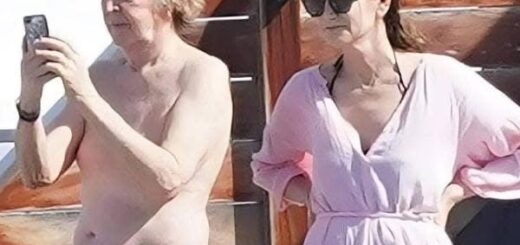Crowning glories: 9 spectacular British royal tiaras with extraordinary

Image: LONDON, ENGLAND – NOVEMBER 22: Catherine, Princess of Wales during the State Banquet at Buckingham Palace on November 22, 2022 in London, England. This is the first state visit hosted by the UK with King Charles III as monarch, and the first state visit here by a South African leader since 2010. (Photo by Chris Jackson/Getty Images)
Royal weddings, Buckingham Palace galas, and elegant state parties attended by bejewelled ladies and crisply-dressed gentlemen – across all seasons, the British royal family makes its appearance in a seemingly unending circuit of events. From outfit analyses to the who’s-who in attendance, sharp-eyed royal watchers take great pleasure in picking out the details. Perhaps the best part about this is the joy one inevitably derives from catching glimpses of the British royal tiaras. After all, where the royal family is concerned, all that glitters is, indeed, gold.
With renewed interest surrounding the British royal family following the coronation of King Charles III and his Queen Consort Camilla, this past year has proven to be a wonderful treasure trove for tiara-spotting. The coronation, which occurred on 6 May 2023, saw numerous British crown jewels and coronation regalia unveiled.
In the height of the Russian revolution, the tiara was dramatically smuggled of the country, and was eventually sold to Queen Mary of Teck in 1921. Throughout the years, the tiara has undergone several renovations and reconstructions, and today is made of platinum. In 1924, Queen Mary would arrange for 15 of the Cambridge cabochon emeralds to be mounted as pendants, so that they could be worn in place of the pearls. The versatile tiara could also be worn without the pendants, allowing its elegant silhouette to shine. Indeed, as a personal favourite of Queen Elizabeth II, the Vladimir tiara has more than seen its share of the sun, with the sprightly queen even commenting that it is ‘quieter’ when worn without the hanging stones.
Queen Mary’s Lover’s Knot tiara

Perhaps one of the most widely-seen British royal tiaras of today, the Queen Mary’s Lover’s Knot tiara was a particular favourite of Princess Diana’s, and today, is worn by her daughter-in-law, Catherine, Princess of Wales. A beautiful piece well deserving of its place in contemporary royal history, the diadem first came to life in 1913, when it was commissioned by Queen Mary.
Produced by E. Wolff & Co. for the House of Garrard using diamonds and pearls from Queen Mary’s private collection, the tiara was made to mirror the Cambridge Lover’s Knot tiara, which was owned by Queen Mary’s grandmother, Princess Augusta of Hesse-Kassel. It is said that Queen Mary sacrificed one of her own pieces — the Ladies of England tiara — to produce the replica.
Its design is inherently gothic revival, prominently featuring lover’s knot bows repeated along the entire length of the tiara. 19 oriental pearls sit perfectly suspended beneath each knot, each featuring a large brilliant-cut diamond. Upon her death, Queen Mary passed the tiara on to Queen Elizabeth II; the tiara would eventually find its way to Princess Diana, for whom it became a great favourite despite its staggering weight. On Diana’s divorce from King Charles III (then Prince Charles), the tiara was returned to the palace and safely stored away. It remained out of public sight until 2015, when Catherine, Princess of Wales, publicly wore it for the first time at that year’s annual diplomatic reception. It remains a personal favourite of the Princess, who has worn it faithfully through the years for numerous state occasions. This British royal tiara is estimated to be worth

Chief among them: St. Edward’s crown, named for Edward the Confessor, an Anglo-Saxon English king who ruled from 1042 until his death in 1066. Initially noted among his regalia in 1161 when he was canonised, the crown, with its storied history would go on to be used in the coronations of several other British monarchs – Henry III, Richard II, Henry IV, and most interestingly, Queen Anne Boleyn. Sadly, this first iteration of the crown would meet an unjust fate during the English Civil War, when it was melted down by Parliament to symbolise the fall of the ‘detestable rule of kings’. The second iteration was created in 1661 upon the restoration of the monarchy, where it has sat on the head of many a king and queen – Charles II, James II, William III, George V, George VI, Elizabeth II, and now, Charles III. Its current iteration is encrusted in 444 precious and semi-precious stones, weighing 2.23 kilograms.
Yet another crown jewel that made its appearance at the coronation was the Crown of Queen Mary, which was originally made for the coronation of Queen Mary of Teck (Queen Elizabeth II’s beloved grandmother). For the coronation of King Charles III, where it was used to crown Queen Camilla, it was reset with the Cullinan III, IV, and V diamonds, with four of its original eight half-arches removed.
At the end of the coronation ceremony and upon withdrawing from Westminster Abbey, King Charles III donned the Imperial State Crown. An impressive spectacle weighing 1.06 kilograms, the crown is adorned with 2,868 diamonds, 273 pearls, 17 sapphires, 11 emeralds, and 5 rubies, a shining symbol of the sovereign which is worn at the State Opening of Parliament.
What are the Crown Jewels of the United Kingdom?
The Crown Jewels of the United Kingdom are a collection of royal ceremonial objects that belong to the ruling sovereign in right of the crown. They include a combination of coronation regalia, gemstones, and more. Separately, the monarch may have their own private collection of jewels, such as Queen Elizabeth II’s collection, which featured many tiaras that have become the subject of much public discussion.
When is it appropriate to wear a tiara?
As with all things in life, rules, too, exist for tiara-wearing. As a general observation, tiaras are to be worn at official state events and visits, white-tie balls, coronations, royal dinners, and of course, royal weddings. They are generally only worn by married women over the age of 18. Once a British royal tiara is loaned to a specific member of the royal family, it is theirs to wear for life.

How large is the British royal tiara collection?
While it is impossible to know for certain how large the British royal family’s private collection is, speculative reports have suggested that it contains at least 50 tiaras. The exquisite collection once belonging to the late Queen Elizabeth II is estimated to be worth £533 million (approx. MYR 3.135 billion), making it a dazzling inheritance that will include some magnificent — some a little controversial — gemstones and jewels.
Nine spectacular British royal tiaras
The Girls of Great Britain and Ireland tiara

A clear favourite of Queen Elizabeth, this iconic British royal tiara has seen much use by the late sovereign, even featuring in a place of prominence on British paper currency. The tiara was first commissioned by Lady Eva Greville, chairperson of a committee of aristocratic women who called themselves the ‘Girls of Great Britain and Ireland’ — hence the name.
The committee would prove so successful in raising funds for the tiara that they would end up with more money than was needed, though it was put to very good use. In a shocking blow to Britain, a maritime disaster saw over 350 lives lost in the 1893 collision and subsequent sinking of the HMS Victoria battleship. Queen Mary of Teck, for whom the tiara had been commissioned, personally requested that the surplus funds be used to support the widows and children of the lost sailors.
Purchased from Garrard and manufactured by Wolff & Co., the completed tiara was then presented as a stunning gift to Queen Mary for the occasion of her marriage to the Duke of York, who would later be crowned George V. Queen Mary would eventually gift the tiara to Queen Elizabeth II as a wedding present, thereupon after it has become a beloved symbol of friendship and familial ties, lovingly referred to as ‘Granny’s tiara’ within the royal family. Most recently, it was seen as a sparkling part of Queen Camilla’s ensemble on an October visit to Mansion House.
The dazzling piece originally featured 14 large pearls, which have since been reset into the Lover’s Knot tiara. It also has a bandeau, which could be removed to be worn separately. Today, the tiara as we know it features fleurs-de-lis designs, bearing 13 brilliant-cut diamonds repurposed from the County of Surry Necklace and tiara set — and the bandeau has been restored. It is said to be worth an estimated
Queen Alexandra’s Kokoshnik tiara

The Prince and Princess of Wales (later crowned King Edward VI and Queen Alexandra) achieved a royal marital milestone in 1888 — their silver wedding anniversary following 25 years of marriage. In celebration, a committee comprising the 365 peereses of the United Kingdom, led by the Marchioness of Salisbury, Maria, Marchioness of Ailesbury, the Countess Spencer, and the Countess of Cork raised money to purchase a stunning gift for the future queen — the Kokoshnik tiara.
With input coming directly from the recipient herself, the ladies set about commissioning the glittering masterpiece, which was made by court jewellers Garrad & Co. Inspired by a Kokoshnik-style tiara belonging to Alexandra’s sister, Empress Maria Feodorovna of Russia (the mother of Tzar Nicholas of Russia), the gorgeous piece takes its form from traditional Russian headwear, forming a glittering wall comprising over 400 diamonds pavé-set in 61 vertical white gold bars.
Alexandra is said to have loved the tiara dearly and wore it often in life. When she passed, the tiara went to her daughter-in-law, Queen Mary, who would eventually pass it on to Queen Elizabeth II, where it would become a beloved piece deserving of its place in modern history. And, most interestingly, the tiara can also be adapted to be worn as a magnificent necklace. Because of its intricate craftsmanship and historical provenance, experts are loathe to assign a price tag to the tiara; however, it is estimated to be worth tens of millions of pounds.
The Grand Duchess Vladimir tiara

Originally commissioned in 1874 by Grand Duchess Vladimir (then Duchess Marie of Mecklenburg-Schwerin) for the occasion of her marriage to Grand Duke Vladimir Alexandrovich of Russia, this intricate, elegant tiara is composed of 15 interlinked diamond circles set in gold and silver. Among the finest of the Grand Duchess’ jewels, the tiara was commissioned from Russian court jeweller Bolin, and featured hanging pear-shaped pearls; it could also be worn in its original form, or as a closed coronet.


